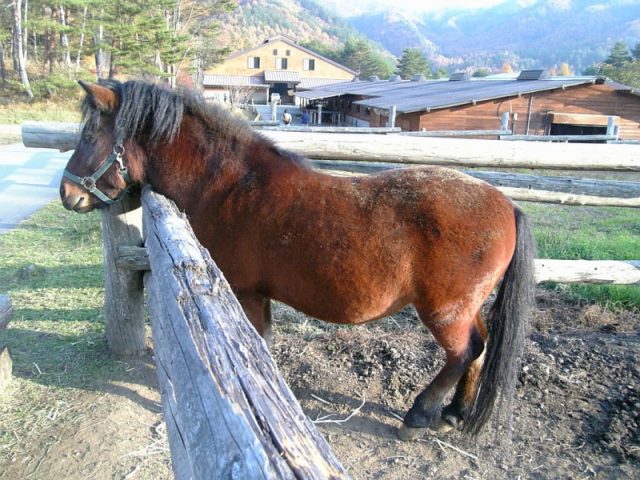Type the name of the breed you're looking for below
[wpdreams_ajaxsearchlite] Don't see the breed your're looking for? Click here and let us know!
Kiso horse
| Country Of Origin | Japan |
| History and Background | The Kiso or Kiso Horse (Japanese: 木曽馬, kiso uma) is one of the eight indigenous horse breeds of Japan. It is the only native horse breed from Honshu, the principal island of Japan. Like most other Japanese native breeds, it is critically endangered. The Kiso breed originates from the Kiso Valley and the Kiso Sanmyaku mountain range, in Nagano Prefecture, and the Higashimino region of Gifu Prefecture, in central Honshu. During the Meiji era (1868–1912) it was severely affected by the breeding programme of the Imperial Japanese Army, which wanted taller horses and ordered that all stallions of the breed should be gelded, and that only imported stallions be used to cover Kiso mares. After the Second World War few pure-bred Kiso horses remained. A single stallion, dedicated to a religious shrine, had escaped castration. His son Daisan-haruyama was born in 1951 and is the foundation stallion of the present-day breed. In 1899 there were 6823 Kiso horses. Between 1965 and 1976 breed numbers fell from 510 to 32. Registration of the breed began in that year, under the Kiso Pony Conservation Group, which was formed in 1969, and numbers have since slowly recovered. In 2013 the total population was estimated at 150. As a result of this population bottleneck, the effective population size – which has been calculated to be 45.8 – is much lower than the census population. Four distinct sub-populations within the Kiso breed were identified in 2012. The Kiso Uma no Sato, or "Kiso horse village", at Kaita Kogen below Mount Kiso Ontake, is a centre for the breeding and conservation of the Kiso breed. |
| Use Today | Light Draft Work, Riding |
| Height | 13 hands (52 inches, 132 centimeters). |
| Colour | Bay, Chestnut |
| Characteristics | The horses of the Kiso breed have a large and heavy head as well as a wide forehead. The neck is short and thick. The trunk is long, with short, but sturdy legs attached. The hooves are hardy and well-formed. The mane is heavy and so is the tail. The size of the breed has decreased since 1948; this may be due either to inbreeding or to lessening influence of the foreign stallions used before the War. The distribution of coat colours in Kiso horses has changed substantially since 1953: in 2011, approximately 93% of those studied were bay or dark bay, and the remainder either chestnut or buckskin dun; in 1953, bay and dark bay made up less than 60%, and there were also small numbers of black, grey and palomino horses. All registered stallions in 2011 were bay. About 66% of the horses studied had a dorsal stripe. |
| Personality and Temperament | The horse has the ability to adapt to different climates. The horse is said to have a mild personality as well as an easy-going temperament. |



